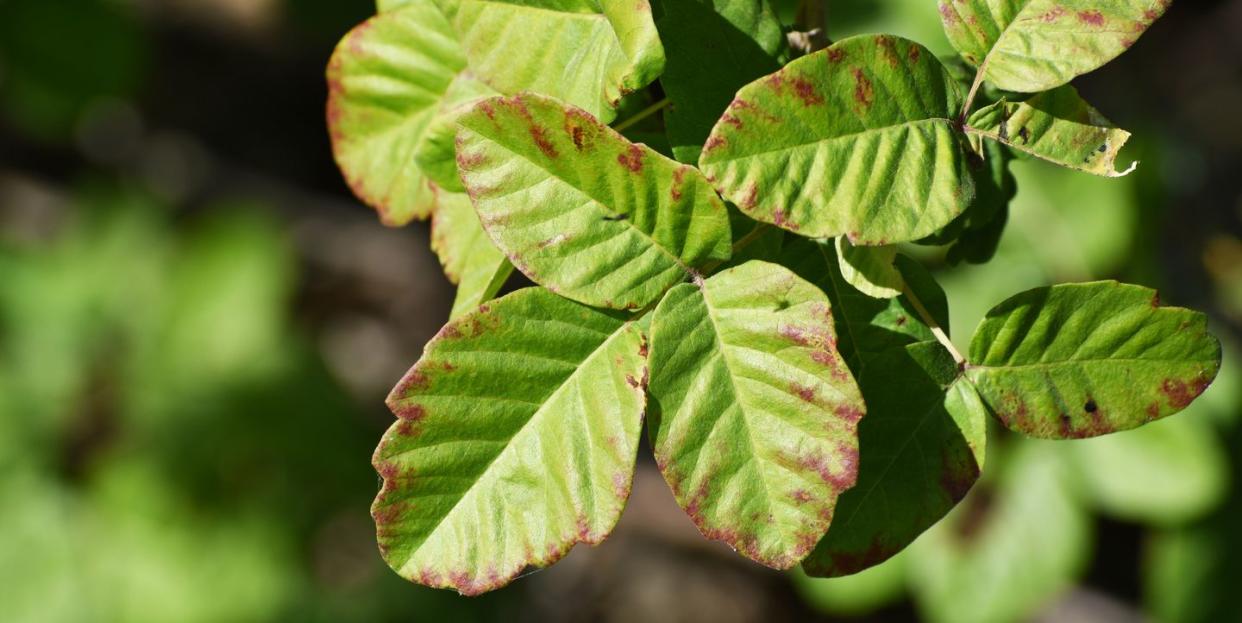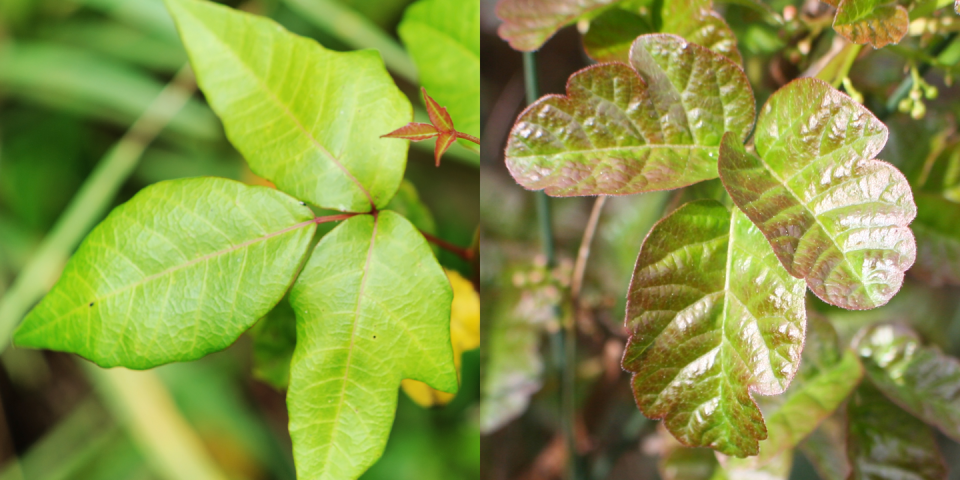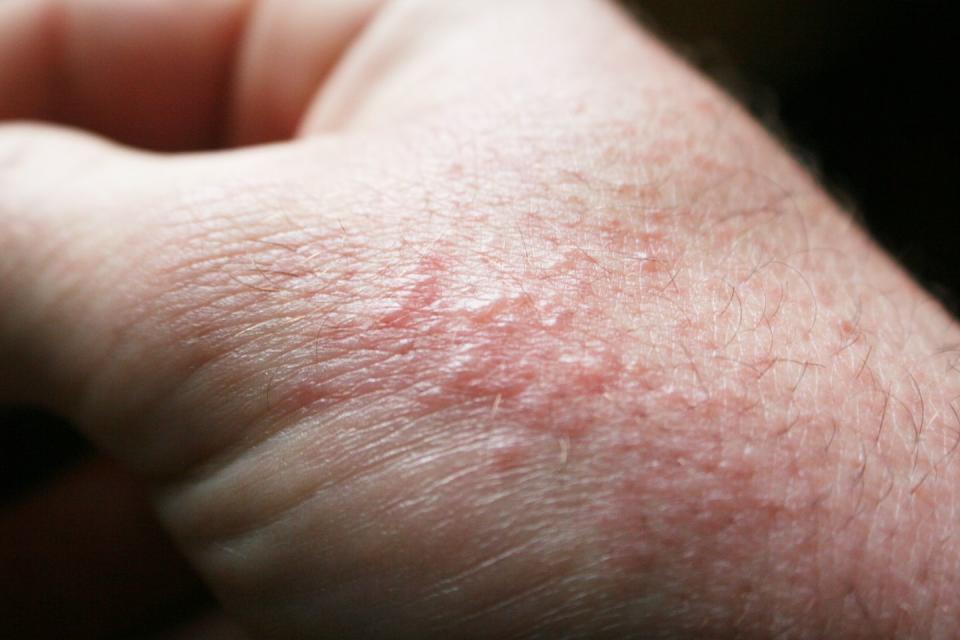Here’s What a Poison Oak Rash Looks and Feels Like, According to Dermatologists

“Hearst Magazines and Verizon Media may earn commission or revenue on some items through the links below.”
When you develop a rash on your body after spending time on the trails, it’s easy to point the finger at poison ivy. But poison oak also causes an intense, itchy red rash, making it tough to know what is actually behind your misery.
Poison oak is a poisonous plant that can spur a reaction in people who have come into contact with urushiol, which is an oil it contains. Most people are allergic to urushiol, and nearly everyone who touches it develops a rash, according to the American Academy of Dermatology (AAD).
“Urushiol, when touched, binds irreversibly to your skin cells, causing allergic contact dermatitis,” says board-certified dermatologist Ife J. Rodney, M.D., founding director of Eternal Dermatology + Aesthetics in Maryland.
Luckily, treatment for poison oak and poison ivy is similar, but it only makes sense that you’d want to know what caused your skin to freak out in the first place. Here, dermatologists break down what a poison oak rash looks like, plus how to treat it if you’re unlucky enough to be exposed.
Poison oak vs. poison ivy: What’s the difference?

Poison oak grows as a low shrub in eastern and southern regions of the United States, and in tall clumps or long vines on the West Coast, according to the Food and Drug Administration (FDA). Poison oak usually has fuzzy green leaves in clusters of three that have scalloped edges with rounded tips. The plant may also grow yellow-white berries.
Poison ivy also contains urushiol, but is slightly different due to its appearance. It’s found throughout the United States except in Alaska, Hawaii, and parts of the West Coast, per the FDA. It can grow as a vine or a small shrub trailing along the ground or be found climbing on low plants, trees, and poles.
Poison ivy also has leaves clustered in three, but they are glossy with smooth or toothed edges, the FDA says. The leaves are reddish in spring, green in summer, and yellow, orange, or red in fall. Poison ivy may even have greenish-white flowers and whitish-yellow berries.
What does a poison oak rash look like? And how long do the symptoms last?
The only way your doctor can tell exactly which plant is behind your rash is if you happened to take a photo of it or you recognized the poison oak as you interacted with it, says Gary Goldenberg, M.D., assistant clinical professor of dermatology at the Icahn School of Medicine at Mount Sinai in New York City.
A poison oak rash “looks very similar or even identical” to a poison ivy rash, he says. Both will usually present with the following symptoms, which often take at least six weeks to completely clear up, depending on the severity:
Fluid-filled blisters
Surrounding redness
Intense itchiness

Is poison oak contagious?
It’s actually a myth that poison oak can spread from person to person. “It’s not contagious or an infection,” Dr. Rodney confirms.
There is a big caveat here, though: Urushiol can transfer onto clothes, pets, gardening tools, and other things that came into contact with the poison oak and linger there, sometimes for years, says Doris Day, M.D., a board-certified dermatologist based in New York City. In fact, the FDA says the oil will stay on “virtually any surface” until it’s washed off with water or rubbing alcohol.
With that in mind, Dr. Rodney says that “there could be a rare occasion” where you might come into contact with poison oak and then someone else immediately touches your skin and gets the oil on themselves. However, once the oil dries on your skin, it can’t be transferred from person to person.
How to treat a poison oak rash
If you happen to touch poison oak and realize your goof right after, Dr. Day recommends trying to wash off the area with soap and water ASAP. “You have about 30 minutes to wash off the plant resin, which is in the leaves, stems, and bark of these plants,” she says. The sooner you can wash it off, the less severe your symptoms will be.
A rash will likely appear anywhere from a few hours to a few days after you’ve been exposed. Once it appears, there are a few things you can do to try to ease the symptoms:
Apply an OTC hydrocortisone cream. This “may help suppress inflammation,” Dr. Rodney says. However, she says most cases “will be much more severe than an over-the-counter cream can treat.”
Dab on calamine lotion. Calamine lotion has drying properties and can help with the oozing and weeping of the blisters that may happen, Dr. Goldenberg says.
Try an oatmeal bath. Pouring colloidal oatmeal into a lukewarm bath can help soothe the itch, Dr. Day says.
If you feel OK, you may be just fine to let it ride. But if you’re uncomfortable or the rash is anywhere near your eyes or face, Dr. Day says it’s time to call your doctor, as “poison oak can be exquisitely itchy.” They’ll likely prescribe an oral steroid medication to take for several weeks, along with a prescription-strength topical steroid to use twice daily.
You Might Also Like

